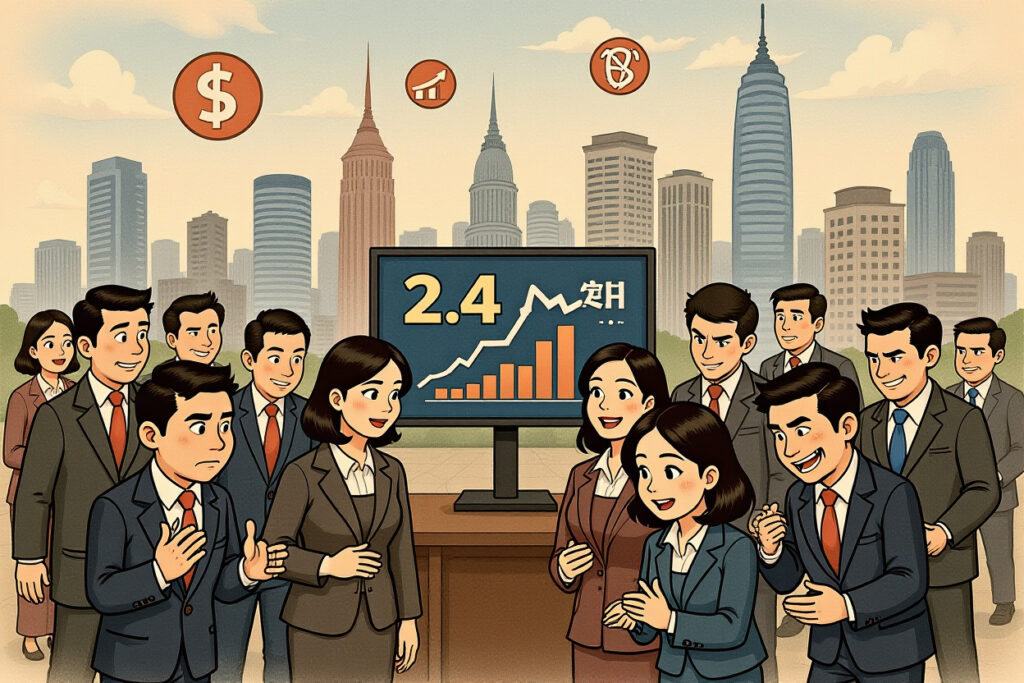Executive Summary
Key takeaways from the Beijing Stock Exchange IPO phenomenon:
- Beijing Stock Exchange IPOs are achieving unprecedented average first-day returns of nearly 350%, far surpassing other Chinese markets
- Regulatory reforms and listing rule changes have created optimal conditions for this explosive growth
- Retail investor participation has reached fever pitch levels, accounting for over 80% of trading volume
- Market experts question sustainability while acknowledging structural improvements
- International investors face both unprecedented opportunities and significant volatility risks
Record-Shattering Performance Captivates Global Markets
The Beijing Stock Exchange (北京证券交易所) has emerged as the hottest ticket in global equity markets, with new listings delivering staggering average first-day returns approaching 350%. This explosive performance has captured attention from institutional investors worldwide who are scrambling to understand whether this represents a sustainable new opportunity or another Chinese market bubble in the making.
Beijing Stock Exchange IPOs have consistently outperformed their counterparts on the Shanghai STAR Market (科创板) and Shenzhen ChiNext (创业板), where first-day returns typically range between 50-150%. The dramatic outperformance has triggered massive capital inflows from both domestic retail investors and international funds seeking exposure to China’s innovative small-cap companies.
Unprecedented Market Dynamics
The surge in Beijing Stock Exchange IPOs reflects unique market conditions that have created a perfect storm of investor enthusiasm. Unlike main board listings that face strict pricing controls, the BSE’s registration-based system allows market forces to determine valuation levels more freely. This has resulted in significant underpricing at offering followed by explosive first-day trading.
Trading data from the past quarter shows remarkable consistency in this pattern. Of the 28 companies that have debuted on the exchange since the rule changes, 25 achieved first-day gains exceeding 200%, with 12 companies surpassing the 400% threshold. The most successful listing, nanotechnology firm Advanced Materials Inc. (先进材料公司), closed its first day at 487% above its offering price.
Regulatory Reforms Fuel the IPO Frenzy
China Securities Regulatory Commission (中国证券监督管理委员会, CSRC) reforms implemented throughout 2023 have fundamentally transformed the Beijing Stock Exchange’s appeal to both issuers and investors. The changes specifically targeted reducing listing barriers for innovative small and medium enterprises while improving market liquidity mechanisms.
The most significant reform involved shifting from an approval-based system to a registration-based framework, dramatically accelerating the listing process. Companies can now complete IPOs within 3-4 months compared to the previous 12-18 month timeline. This efficiency gain has created a pipeline effect, with multiple high-quality companies reaching markets simultaneously.
Strategic Positioning and National Priorities
Beijing Stock Exchange IPOs benefit from strategic positioning within China’s broader financial market development plans. The exchange specifically focuses on serving “little giant” enterprises – innovative small and medium companies that specialize in niche markets and possess cutting-edge technologies. These companies align perfectly with China’s technological self-reliance goals and industrial upgrade priorities.
Government support extends beyond regulatory changes. The Ministry of Industry and Information Technology (工业和信息化部) has identified over 8,000 “little giant” enterprises eligible for preferential listing treatment, creating a deep pipeline of potential Beijing Stock Exchange IPOs. This official endorsement has significantly boosted investor confidence in the exchange’s long-term prospects.
Retail Investor Mania Drives Trading Volumes
The spectacular performance of Beijing Stock Exchange IPOs has triggered an unprecedented retail investor frenzy. Individual traders account for approximately 82% of total trading volume on the exchange, compared to 55-60% on China’s main boards. This heavy retail participation amplifies both upside momentum and downside volatility.
Social media platforms have become breeding grounds for IPO speculation, with Douyin (抖音) and Xueqiu (雪球) featuring countless tutorials on how to participate in Beijing Stock Exchange IPOs. The minimum investment threshold of 500,000 yuan (approximately $69,000) in securities assets for trading permission has done little to dampen enthusiasm among China’s growing cohort of sophisticated retail investors.
Institutional Participation Patterns
While retail investors dominate trading volumes, institutional players are increasingly strategic about their Beijing Stock Exchange IPO participation. Mutual funds and private equity firms have developed specialized strategies focusing on pre-IPO investments and strategic placement allocations rather than secondary market trading.
Several major international institutions have gained access through Qualified Foreign Institutional Investor (QFII) programs, though their participation remains limited compared to domestic players. Goldman Sachs (高盛) and UBS (瑞银) have been particularly active in bringing international capital to these offerings, though they typically caution clients about the extreme volatility accompanying these investments.
Valuation Concerns and Sustainability Questions
The astronomical gains in Beijing Stock Exchange IPOs naturally raise questions about valuation sustainability. Price-to-earnings ratios for recently listed companies average 48 times trailing earnings, compared to 28 times for similar companies on China’s main boards. This premium reflects growth expectations but also incorporates significant speculation成分.
Market analysts express concerns about the disconnect between fundamental values and market prices. Liu Jipeng (刘纪鹏), a prominent finance professor at China University of Political Science and Law, recently warned that “while innovation deserves premium valuation, current levels suggest irrational exuberance that rarely ends well.”
Historical Precedents and Cycle Analysis
Experienced China market participants recall similar IPO frenzies that ended painfully. The 2009-2010 ChiNext launch saw average first-day returns of 85% followed by a 42% correction over the subsequent 18 months. The 2019 STAR Market debut produced 140% average first-day gains before settling into more sustainable trading patterns.
What distinguishes Beijing Stock Exchange IPOs is the magnitude and consistency of outperformance. The current cycle has already lasted longer than previous episodes, suggesting either structural differences or greater bubble risks. Most analysts believe the truth lies somewhere in between – genuine improvements in company quality combined with speculative excess.
Strategic Implications for Global Investors
For international fund managers, Beijing Stock Exchange IPOs present both extraordinary opportunities and complex challenges. The returns potential clearly demands attention, but the volatility and accessibility issues require sophisticated approach strategies. Successful participation typically involves partnerships with domestic institutions or specialized funds focused exclusively on this market segment.
Risk management becomes particularly crucial given the extreme price movements. Professional investors generally recommend position sizing that reflects the speculative nature of these investments, with most limiting exposure to 1-3% of total China allocation. Derivatives for hedging remain limited, making traditional risk management approaches less effective.
Long-Term Growth Trajectory
Beyond the short-term trading frenzy, fundamental analysts see genuine long-term potential in Beijing Stock Exchange listings. The focused concentration on technology manufacturing, specialized materials, and advanced components aligns with global investment themes around supply chain resilience and technological innovation.
Companies that survive the inevitable valuation correction could represent compelling long-term investments at reasonable prices. The key differentiator will be sustainable competitive advantages rather than IPO pop potential. Investors with patient capital and strong research capabilities may find exceptional opportunities after the current euphoria subsides.
Navigating the Beijing Exchange Opportunity
The unprecedented performance of Beijing Stock Exchange IPOs represents a complex phenomenon combining genuine fundamental improvement with speculative excess. While average first-day returns approaching 350% are unsustainable long-term, the exchange has established itself as a legitimate venue for innovative Chinese companies seeking capital.
Sophisticated investors should approach this market with both optimism and caution. The extraordinary returns come with extraordinary risks, particularly for those entering after the initial price surges. A disciplined strategy focusing on fundamental valuation after the IPO frenzy subsides may offer the best risk-adjusted returns.
As China continues developing its multi-tier capital markets, Beijing Stock Exchange IPOs will likely remain a high-risk, high-reward segment that demands specialized expertise. International investors should prioritize partner selection, risk management, and long-term perspective over short-term speculation. The companies that ultimately succeed will be those with sustainable business models, not just spectacular debut performances.




